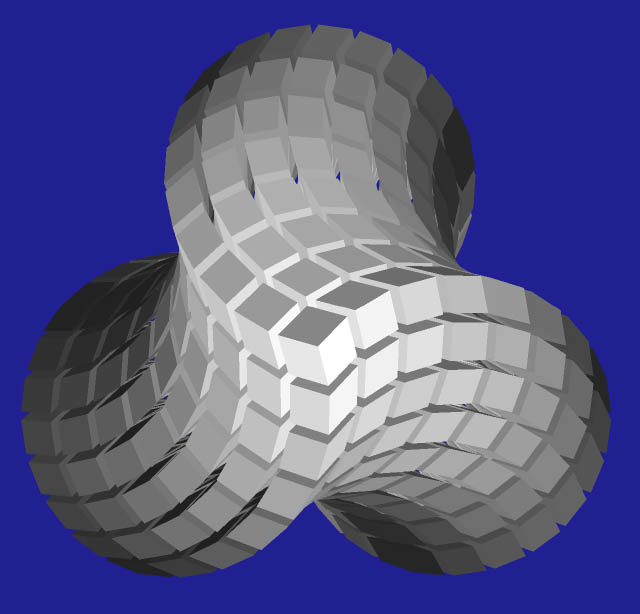 |
The C3v nut (1)
© 2013 Michel Petitjean
|
|
 |
The C3v nut (2)
© 2013 Michel Petitjean
|
|
 |
3-armed rhombic spirallohedron.
Image file communicated the 23 January 2006 by Russell Towle,
who discovered the spirallohedra and their space filling properties
(Symmetry: Culture and Science, 2000,11[1-4],293-306).
|
|



 ).
).